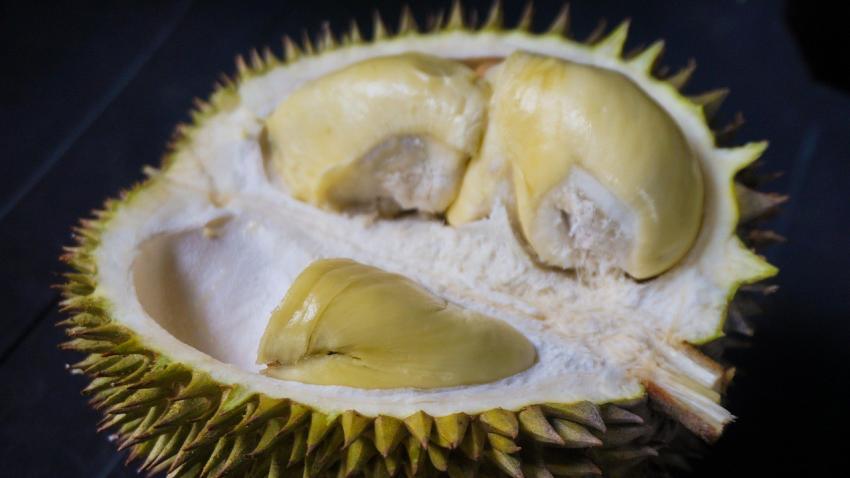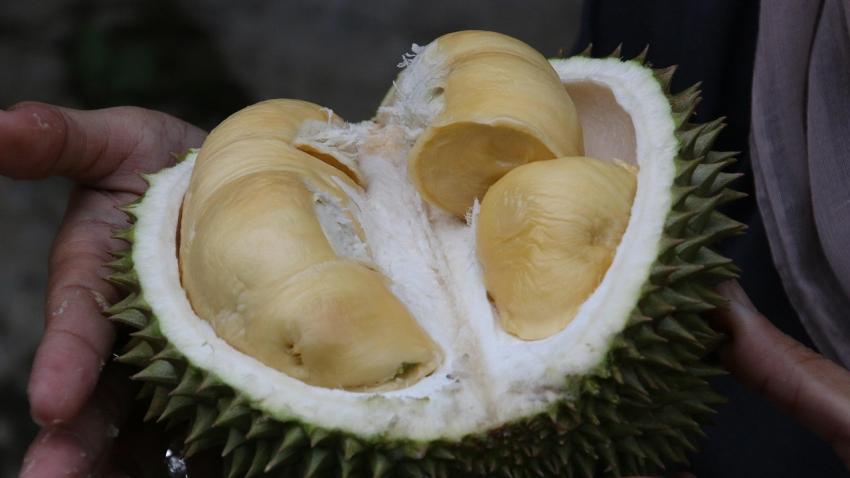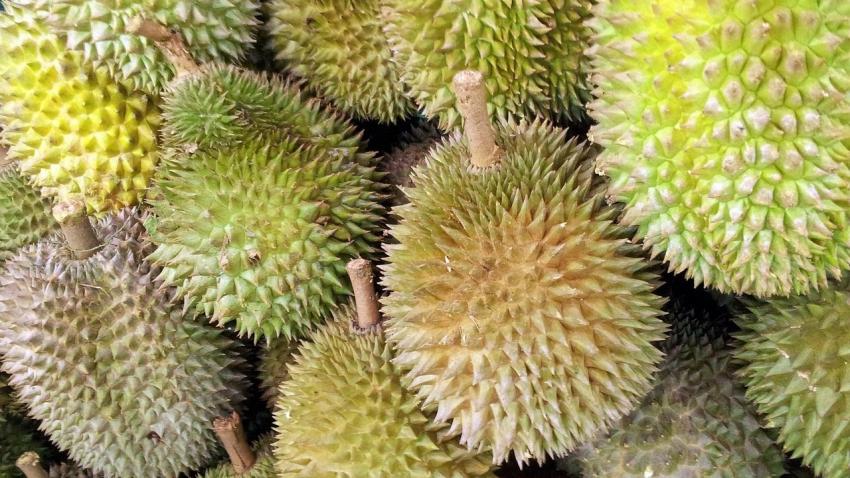You are here
Back to topHainanese Durian Trees Bear Fruit for Second Consecutive Year

After successfully setting fruit last year, test-grown durian trees in Hainan province bore fruit again this year, bringing Hainanese durian production one step closer to reality. In the Huasheng Hongmaodan Growing Area (华盛红毛丹种植基地), situated in Baoting Li and Miao Autonomous County, every mature tree bloomed and bore fruit, with the most prolific tree bearing over 20 fruits. Moreover, trees that bore no fruit last year bore three to five this year.
The area started with over 40 durian trees planted in 2015 for scenic purposes. However, the trees attracted widespread attention last year when they began to bloom and bear fruit. This year, researchers at the Hainan Academy of Agricultural Science implemented a program in the area to assess the viability of growing durians in the province. According to the experts working at the academy, it was previously thought that Hainan’s durians were of the Monthong or Puangmanee varieties; however, it was later found that the durians produced appear slightly different to these cultivars and more similar to Thailand’s Kanyao variety. As expected, total production was up this year, and both the flavor and texture of the fruits were reported to be good.
The successful production of fruit for two consecutive years has given local growers and specialists greater optimism about growing durians in Hainan. Some growers and agricultural enterprises could not wait for the results of the viability assessment and have started growing their own batches of durians. Researchers at the Hainan Academy of Agricultural Science have estimated that the growing area for durians in the province currently stands at over 10,000 mu (1,640 acres), distributed across areas such as Baoting, Sanya, Ledong and Lingshui, and this is projected to exceed 30,000 mu (4,942 acres) in the next two years. Durians have been an extremely popular item in China for a long time, with annual sales volumes exceeding 500,000 tons. Hainan is also China’s only tropical island, with climatic conditions similar to those of the major durian-growing countries of Thailand and Malaysia, making it an island with tremendous potential.
Whether durian cultivation on the island will be completely successful remains to be seen, yet the planting industry for the fruit has already begun to gain traction. Market prices for durian seedlings are high, with Thai Monthong seedlings selling for roughly 200 Chinese yuan ($29) each and Malaysian Musang King varieties selling for over 260 yuan ($38) each. The price of larger seedlings even soared to over 800 yuan ($117) each last year. The Huasheng Hongmaodan Growing Area is now growing over 10,000 durian saplings.
Nonetheless, some key issues have yet to be overcome. For starters, further research is still required to determine whether durians are suitable for growing in Hainan. From a technical standpoint, durian trees also take a long time to grow, typically requiring four to eight years before beginning to bear fruit. Such a long-term investment of time and effort without guaranteed economic benefit presents a substantial risk to growers. Durian trees are also relatively tall and take up a large amount of space, making crop management difficult. This is all in contrast to fruits such as passion fruit, pineapple and pawpaw, which can bring economic benefits much quicker. Hainan is also prone to being hit by typhoons, which could potentially decimate entire crops of durian.
Image: Pixabay
This article was translated from Chinese. Read the original article.















Add new comment